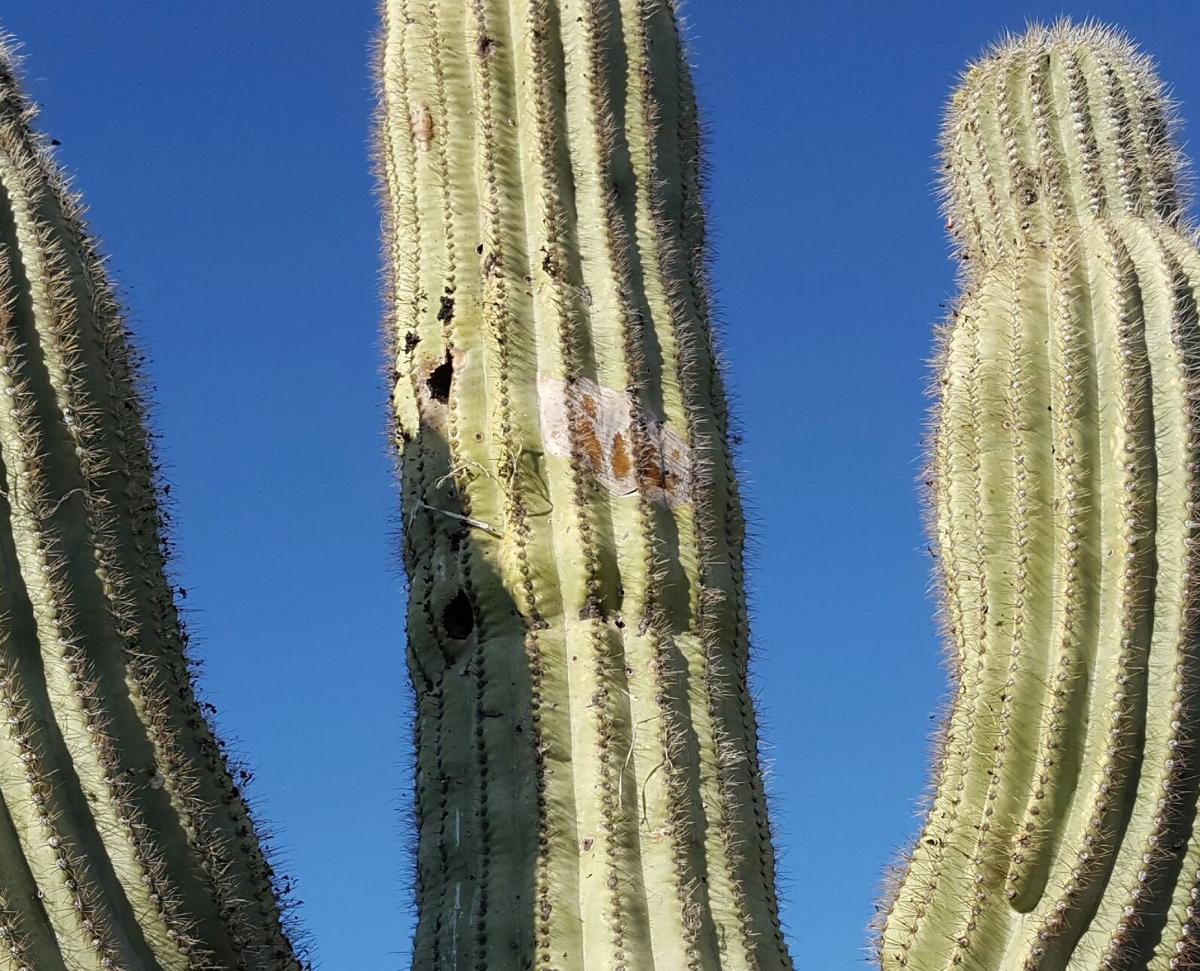Q: We live at 4,000 feet of elevation at the base of the Santa Ritas and have two “rescued” saguaros and one nursery bought.
The biggest is George (pictured). We moved George here in 2010 from a construction excavation site. We have licenses for all three of them. He did great first year then 2011, the winter from hell, arrived. A great deal of his south side froze in the wet, windy, and below-freezing temps we had for four days. He survived the damage and thrived. The side in this picture is facing north toward the Catalinas. Over the past few years, he has become a high rise apartment complex for Gila woodpeckers. This year three additional holes appeared as prior holes are now occupied by European starlings. Now he has six large holes. A month ago this splotchy patch (pictured) appeared on the north side, underneath a rather large hole taken over by the starling family. Is this some kind of fungus or could the tissue be damaged from internal carving of the hole inside and nearby? Never had the starlings before and given George’s height, no way to get rid of them. At least the Gilas return to the same homes every year but this year had to drill more!
A: The splotchy patch appears to be a symptom of bacterial necrosis caused by the bacterium Erwinia cacticida. The initial symptom is typically a small, light-colored spot with a water-soaked margin on the surface of the trunk or branches. Obviously, you are looking out for George because symptoms like that could easily go unnoticed. The tissue under the infection site appears to be showing a brown color and may eventually turn almost black. As the disease progresses, the tissue may crack and exude a dark brown liquid. If decay is slow, the tissue may not show the liquid. Although it’s tempting to blame the invasive European starlings, the bacteria could be transmitted by any number of animals, not to mention wind blowing it in from nearby plants.
If the damage was very small and reachable, I might suggest carving it out. Given the height of George and the spread of the symptoms, it might be best to either call an arborist with the proper equipment to reach that high or just let nature take its course. I can’t tell if there is any danger to people or property from the photo but it would be wise to consider the potential hazard if the problem gets a lot worse.
Peter L. Warren is the urban horticulture agent for the Pima County Cooperative Extension and the University of Arizona. Questions may be emailed to tucsongardensage@gmail.com





